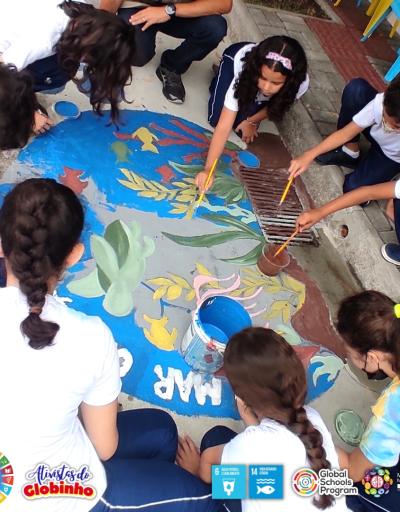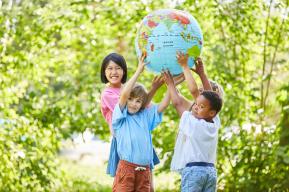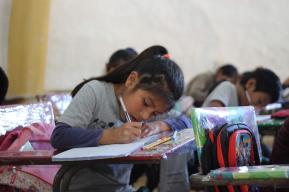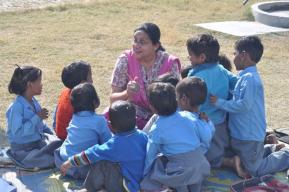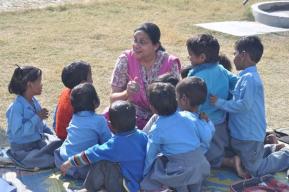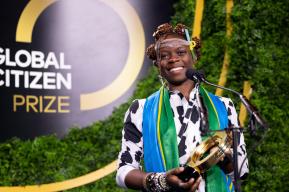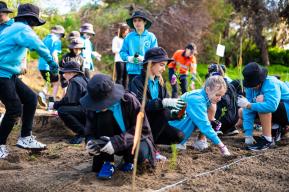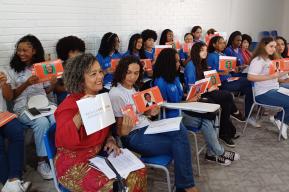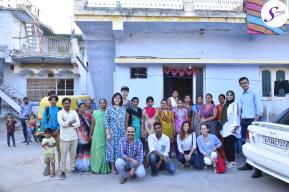Remember the first time you worked on an art project as a child? It was an expression of you, something that came from nothing, something you created. How about a school trip you may have taken to a museum or national park? You may remember how they felt larger than life, with discoveries to be made, wonders to behold. In many ways these experiences reflect have shaped your identity and made you who you are. They are your culture.
While not immediately obvious, art, expression and culture provide powerful means for sustainability and education. Education for sustainable development (ESD) aims to bring a holistic and interdisciplinary approach that can ensure sustainability is present in all of us. Arts and cultural education, as a component of ESD, can empower learners of all ages with the knowledge, skills, values and attitudes to address various challenges from climate change and environmental degradation to poverty and inequality. Through creative expression, sustainability can be seen in many different forms all over the world.
Learning to care for the planet through art
In Brazil, The Colégio Santa Chiara basic education school in Aracaju, Sergipe launched the "Globinho Activists" Programme to teach students about sustainability. Students learned about the rivers and waterways in their region and about the importance of water and how local rivers are connected to the sewer systems where they live. In these communities, sewer drains are often seen or used as trash cans, but after learning about the importance of the water ecosystem students wanted these entryways to serve as a reminder of where they lead. The beauty of water ecosystems starts here, illustrated through art.
Art can also connect learners with sustainability and cultural issues using materials and nature. The Busleyden Atheneum Pitzemburg, a UNESCO ASPnet school in Belgium, which teaches its students about SDGs through project-based learning. One of the projects focuses on mining in the Democratic Republic of Congo, where tens of thousands of people (including children) work in life-threatening conditions in underground mines. At the school, students carried out a year-long project learning about the history of the country, mining industry and knowledge of the elements mined, which produced an installation in the form a map of the Democratic Republic of Congo. Upon first glance, a series of cobalt glazed tiles look pretty, but unordinary. Yet the experiences the students have from these experiences will last a lifetime.
Undoubtedly, art and culture are expressed in multiple different forms, and theatre, film and song can be also used as tools to evoke emotions and connect people to issues of sustainability. In an incredibly moving project, the representatives from the World Organization for Early Childhood Education (OMEP) in Ukraine showcase the children of Ukraine singing and drawing about peace. This video demonstrates just how important art can be. (Credit: Tetyana Kovalyova, head of OMEP of Ukraine).
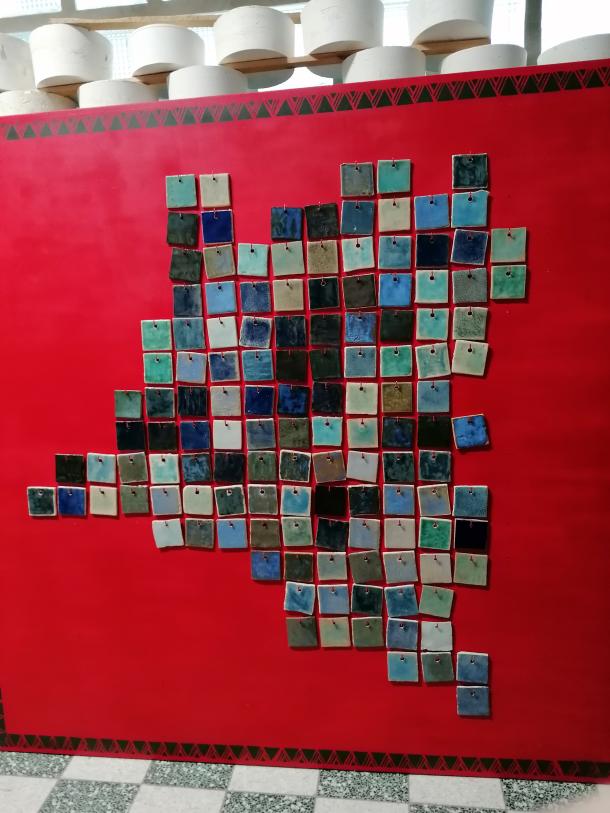
Museums: Platforms to engage and learn about sustainability
Museums can also serve as active voices for sustainability. Given their traditional role as trusted institutions of learning and knowledge, storytellers, and purveyors of history and society, museums are a natural place to celebrate the connection between art, narrative, and sustainability. The Ki Futures programme, launched in 2022, has been positioning the cultural sector as a leader in the fight for a sustainable future. Through this programme, museums are engaging with sustainable practices and educating their visitors. A beautiful example of empowering a marginalized community through ESD comes from the Museo Moderno in Buenos Aires, Argentina. The museum hosted a programme that invited the local homeless population to create artwork to be displayed, as well as an opportunity for the artists to sell their work. This exhibition was a unique, inclusive engagement with traditionally excluded communities.
A sustainable future can be achieved by engaging learners in environments that connect with us personally to issues of sustainability. Facts and figures may not always resonate, but through art, song, and our culture, we can bring sustainability to life. There are examples in every community of how people use creative expression and culture. These artistic and cultural expressions are a great lifelong learning process and an integral part of quality education which needs to be further integrated within the traditional academic walls and, more importantly, be incorporated into every aspect of our daily lives.
Contributions to this article made by Caitlin Southwick, Ki Cultures
- UNESCO’s work in education for sustainable development


